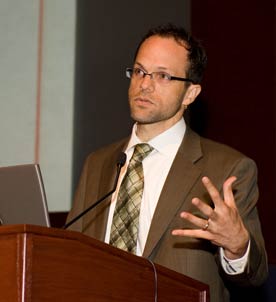
Photo by Steven Most
The Congressional Oversight Panel assembled a year ago when TARP was enacted in order to review the regulatory system and financial markets offered some encouraging words, but an overall sobering analysis, in October in examining the state of the administration’s efforts to stem foreclosures:
Make your policies work for the crisis as it currently exists, and not as it existed six months ago.
Specifically, the report gives an updated analysis of Making Home Affordable, which comprises the Home Affordable Refinance Program (HARP), aimed at helping homeowners refinance more affordable mortgages, and the larger Home Affordable Modification Program (HAMP), that aims to reduce mortgage payments to keep people in their homes. Those programs, according to the panel’s Elizabeth Warren, have helped “at least temporarily,” and could continue to help in the long term, but, she added, “three major concerns” still haunt the market, as one in eight mortgages is now in default, and foreclosures could rise as high as 12 million in the months to come.
The report documents concerns about the scope and scale of Making Home Affordable, as well as asking if it’s solving the problem, or simply dragging it out. Most worrisome, however, is Warren’s assertion that Making Home Affordable is simply anachronistic at this point, addressing a foreclosure crisis as it existed in March 2009, pointing out that HAMP only helps certainly types of borrowers, like subprime borrowers, but not other foreclosures, like those caused by unemployment — one of the biggest drivers of foreclosure.
Warren also expresses concern about the speed of the programs, saying that foreclosures are expected to outpace modifications by about two to one.
Somewhat softening the blow, however, was data released by the administration the same week as the COP report announcing that its goal of reaching 500,000 trial loan modifications was achieved almost a month ahead of schedule, but with foreclosure filings up 23 percent from a year ago, according to RealtyTrac, that’s hardly reason to cheer, in fact, “the picture’s gotten worse,” Warren said.




Comments